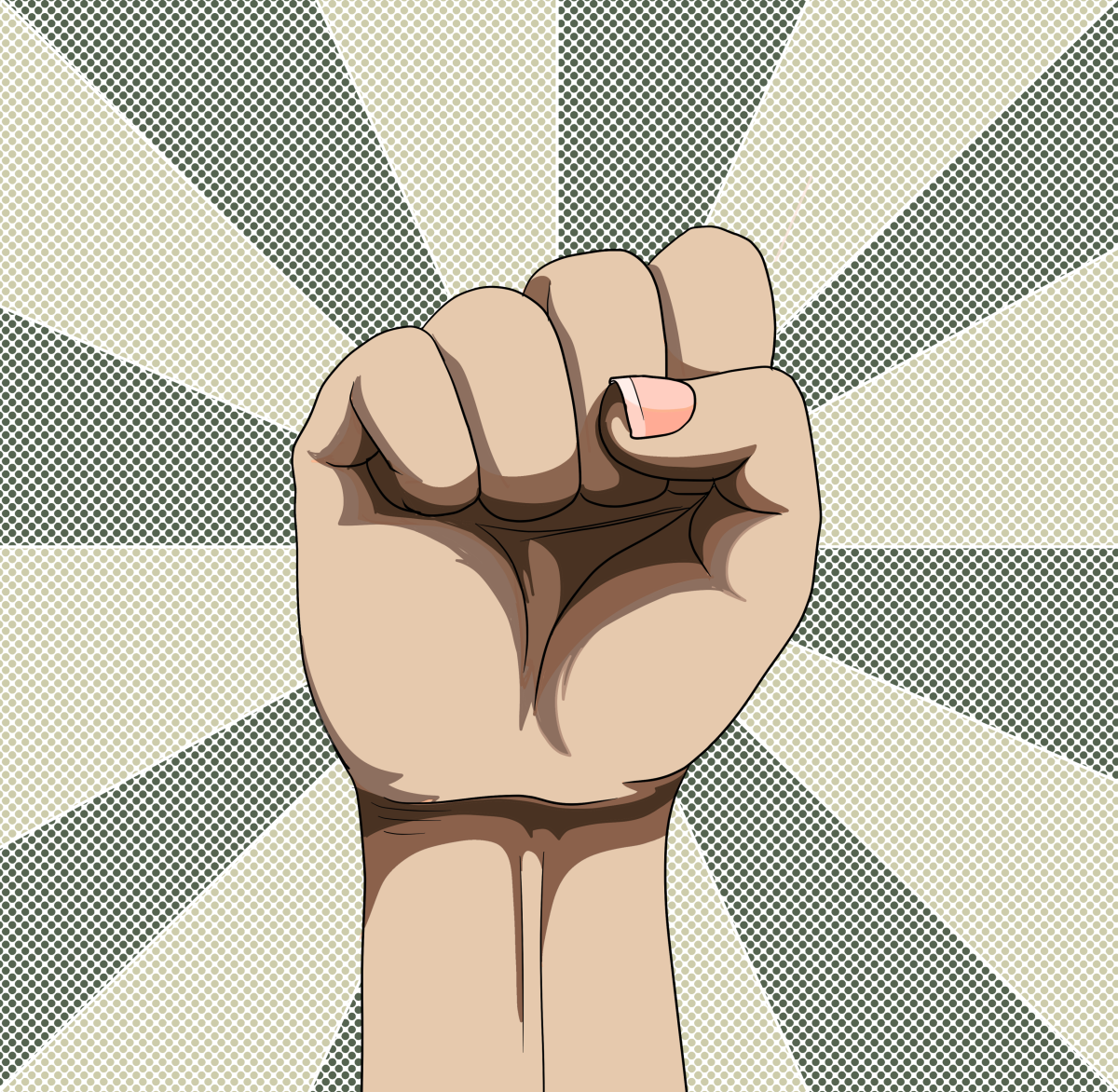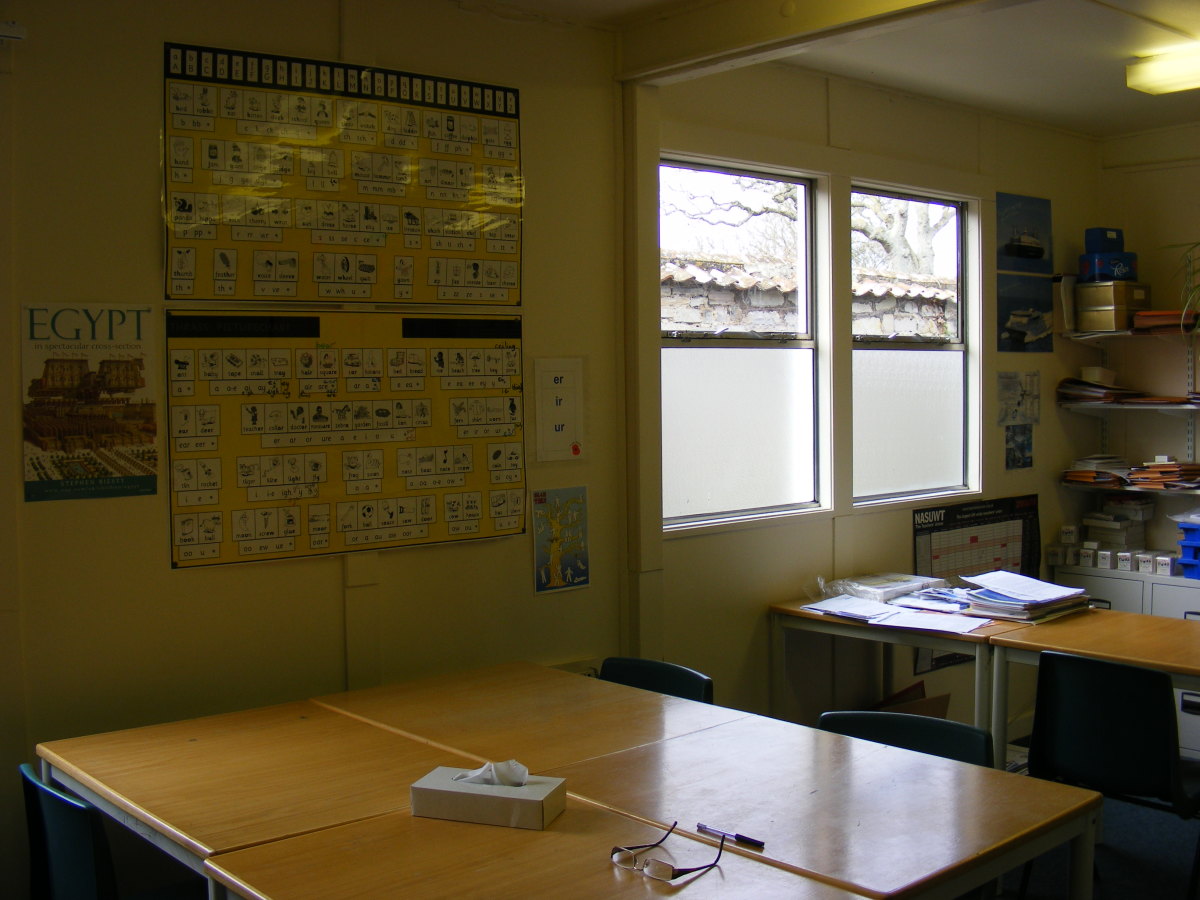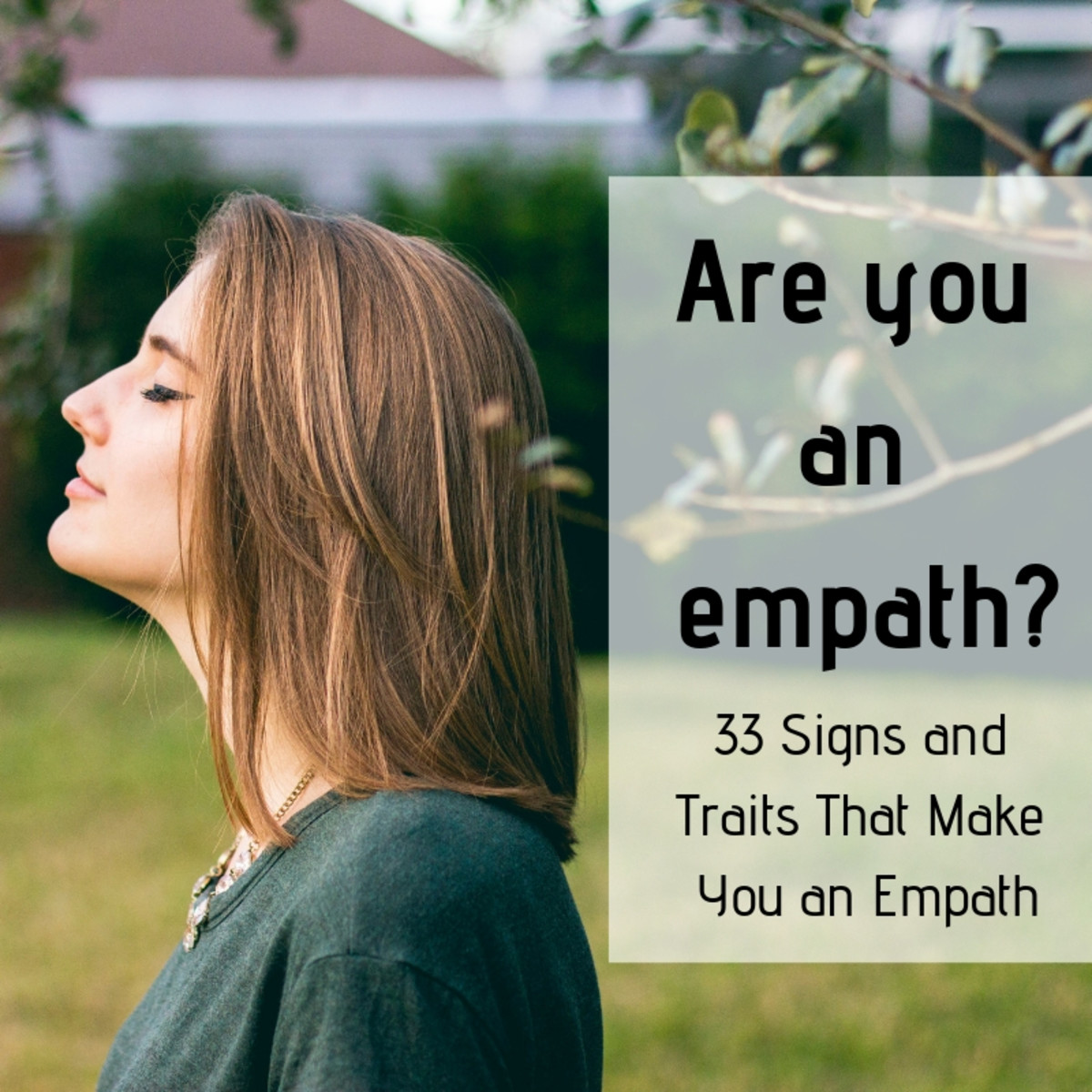Suffering From Bullying? Overcome the Impasse With a 7-Step Plan for Everyone Involved
Isn’t it time for a completely different approach to bullying? There are all kinds of anti-bullying methods available these days. Many countries have anti-bullying legislation, e.g., there is anti-bullying legislation in all 50 states in the US. And yet, there are still far too many victims of (cyber)bullying. Not only in schools is personal security at stake (Hymel, 2015). Even adults are being bullied -- at work (Namie, G., The Workplace Bullying Institute (WBI), 2010), in their neighborhood (Bullying Prevention Program, 2018) or in a nursing home (Pillemer, 2014). The figures don’t lie. The consequences of bullying are very serious (Rigby, 2014). Obviously the current approaches are lacking.
In this article you will find a 7-step plan based on Scott Kiloby’s Living Inquiries showing you which steps you can take when suffering from bullying.
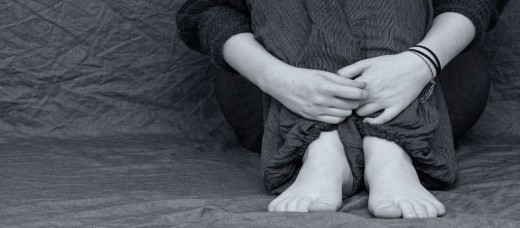
Many of the current approaches in schools (Rigby, Bullying Interventions in Schools: Six Basic Approaches, 2012)(Yabko, 2013) focus on the use of codes of conduct, additional surveillance, disciplinary measures and cognitive behavioral approaches (e.g. role-playing, learning to think differently). In other words, make sure you behave correctly or you will be punished, either by the teacher or the bully.
Those involved in a bullying situation might know what to do and would like to do that, but despite the current approaches they can’t, because in a confrontation they seem to repeatedly fall into knee-jerk reactions or habits (Yabko, 2013). The current approaches seem to offer insufficient guidance for those involved to be able to change their behavior (Androu, 2007).
Do you know what to do if you are confronted with bullying, but you always react in the same ineffective way, which doesn’t change the situation? Then this simple 7-step plan can help. It doesn’t matter if you are: being bullied, the bully, an assistant or an enabler of the bully, a bystander, a parent, a sibling, a confidant or in charge of the group in which bullying takes place.
If you act from a sense of well-being, from Natural Rest (Scott Kiloby) or mindfulness (Kabat-Zinn, 2005), the right action follows in a natural way and in harmony with your environment (Dameron, 2015)(Garofolo, 2012)(Schonert-Reichl, 2015). Scott Kiloby’s[1]Living Inquiries are an intimate and fully embodied exploration of both our felt experience and our beliefs. They are the basis for the 7-step plan this article describes.
Suffering
Regardless of whether you are the bully, the one being bullied, an assistant or an enabler of the bully, a bystander, a parent, a sibling, a confidant or in charge of the group in which bullying takes place, the suffering you experience always consists of what you think and feel. Thoughts appear as either words or images. Feelings and emotions occur as bodily energies. Please take a moment and experience this for yourself right now.
Remember a time when you were suffering from bullying. See how this presents itself to you. There might be an image and/or words. What do you feel in your body when looking at or listening to all of this? It seems that bodily energy is stuck to the thoughts. This is what Scott Kiloby calls the Velcro effect: words (black Bunchems), images (green Bunchems) and/or bodily energies (red Bunchems) (Figure 1). As long as words, mental images and bodily energies are present simultaneously, meaning they are sticking together, they cause you suffering. In order to get rid of suffering it is therefore important to undo this Velcro effect by 1. picking up each element, 2. isolating it from the rest and 3. letting it disappear, so it will not get stuck again.
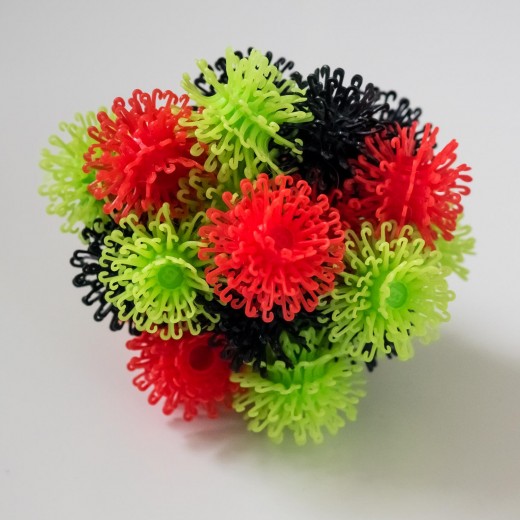
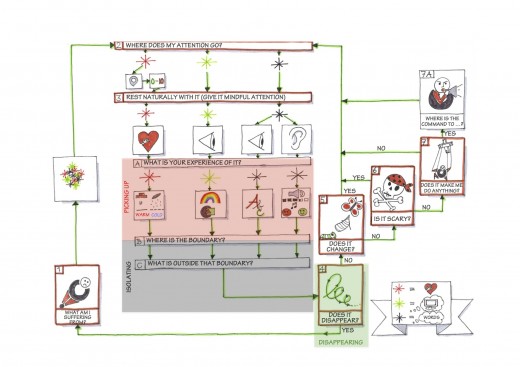
Step 1. What am I suffering from?
When did you last suffer from bullying? How does your most recent bullying episode appear to you now: as words, images or bodily energies or a combination of them (the Velcro-effect)? It is possible to work on the suffering in the safety of your own home, so you don’t have to be in the actual bullying situation.
Step 2. Where does my attention go?
If a physical sensation is drawing your attention now, find out where in your body you feel it. Do you feel it in one place, or in multiple places? If there are multiple places, feel the one which seems to draw your attention the most. If they are equivalent, then take them together as a starting point.
If you cannot immediately locate where in your body you feel it, ask yourself if you feel it all over your body. If so, you take the whole of this physical sensation as a starting point. If not, scan your body slowly from the top going down, until you narrow down more specifically where you experience the physical sensation.
Once you have located the physical sensation, give it a number between 0 and 10. A rating of 0 means that you feel nothing at all; 10 means that it is almost unbearable to feel. Please write the number down. This allows you to keep track of how the physical sensation changes and disappears.
Step 3. Rest Naturally with it (give it Mindful attention)
1. Picking up
Touch the bodily energies from within, as it were. Inquire into your experience: Does the bodily energy feel hard or soft? Does it feel concentrated in one place or widely spread? Do you feel it continuously or is it intermittent? Does it feel warm or cold? What does stand out about this bodily energy further? Make sure you keep feeling raw sensations. Sometimes very subtle images appear, e.g., of where the energy is located in your body. If this happens, just watch the image for a short while and then move your attention from watching to feeling again. Possibly you could draw the image or make a note of it for future inquiry.
If images appear: notice if the image is still, like a photograph. Or do the images move like in a movie? According to what is appearing, look at it as if it is a photograph or a collage of photographs hanging on the wall or a movie in the cinema or on television: notice the different colors and the different shapes.
If you see words: notice the letters. Are they typed out or handwritten? In block capitals or not?
Do you hear words? Listen carefully if they sound loudly or quietly? What is the tone of voice? (friendly or mean?) Is it in a high or low pitch? Whose voice is it actually?
2. Isolating
Try to find the boundary of the bodily energies, words and images, while you feel, watch or listen. Where do they begin or end? Are there any boundaries in between?
Notice the difference in feeling the bodily energy and the space outside of it; in watching the image or letter and the space outside; in hearing the words and not hearing them anymore.
Step 4. Does it disappear?
3. Disappearing
Watch, listen to or feel it and see what happens with it. It’s very important that you don’t manipulate it. Sometimes we want something to go away or change or sometimes we even want it to stay. If this is the case, notice there is thinking, so there must be words and/or images too. See them for what they are and then bring your attention back to where it was before those words and/or images appeared.
Approach it as if it is the very first time you discover it. And maybe it is the first time it gets your full attention this way. Chances are you might really discover something new.
So don’t do anything with it; just watch, listen or feel. What happens? Does it disappear? If so, go back to step 1 and check if there is any suffering left. If that is the case, walk through the steps this time with what remains. If it doesn’t disappear, go to step 5.
Step 5. Does it change?
If it changes, then other bodily energies, words or images need to be isolated. Go back to step 2 and inquire on the change. If it doesn’t change, go ahead to step 6.
Step 6. Is it scary?
Is it scary or a threat? Then other bodily energies, words or images need to be isolated. Go back to step 2 and inquire on this threat. If it isn’t scary, go ahead to step 7.
Step 7. Does it make me do anything?
See if you notice any tendency to do something or, on the contrary, to refrain from doing something. If no, go back to step 2 and inquire on the very thing that asks for your attention right now. If yes, see if you can find the command to do something or to refrain from doing something. Inquire into the answer by taking it back to step 2.
As long as there is, on a deeper level, a Velcroed bundle of words, images and bodily energies, that keeps triggering knee-jerk and patterned behavior, any requested behavioral change is one bridge too far
By fully paying attention to these three parts of the Velcroed bundle, and by resting with them in a natural way, the Velcro effect will get undone. This means that suffering will be reduced. When you run into a similar bullying situation next time, you will suffer from it less or not at all. In concrete terms, this means that you are less inclined or not inclined anymore to fall into an old, undesirable, knee-jerk behavioral pattern that is not helpful in the bullying situation. The lack of this knee-jerk pattern of behavior offers space for creative possibilities and solutions. It then feels as if you have more freedom of choice. Perhaps you will use the standard rules of conduct that you have learned or perhaps you will find unique and creative answers to the bullying situation, which, by their originality, makes a greater impact and will possibly inspire others.
Benefit
As long as there is, on a deeper level, a Velcroed bundle of words, images and bodily energies, that keeps triggering knee-jerk and patterned behavior, any requested behavioral change is one bridge too far (en.wikipedia.org/wiki/Amygdala, 2018). The 7-step plan based on the Living Inquiries undoes the Velcro effect. Those involved in a bullying situation can move, think and express themselves freely again. In this way they are able to apply what they have learned or even come up with a creative and even greater solution.
Disadvantage
In the beginning it can feel a little strange and it takes some courage to look and feel the very things you have been avoiding all of your life. You can compare it with a muscle that needs to be trained. It may seem boring and it takes time. But the same can be said for training for a marathon.
Conclusion
Continuing to attempt to manage bullying situations with approaches that are not effective enough is just not an option as long as bullying continues to escalate. Let each of us take responsibility for our own reactions – whether we are somebody who is being bullied, a bully, an assistant or an enabler of the bully, a bystander, a parent, a sibling, a confidant or in charge of the group in which bullying takes place. Remember that we are the ones that are suffering from the bullying situation.
We are the only ones who can attend to this suffering and thus our own well-being by becoming aware of our own Velcroed ball of words, images and bodily energies. We are the only ones who can undo the Velcro for ourselves. Then, when we run into a bullying situation again, we will be able to act appropriately in our own unique way (Napoli, 2005)(Wisner, 2010). That way we won’t suffer anymore and we overcome the impasse of the bullying situation: a win-win.
[1]Scott Kiloby is an author and international speaker on the subject of freedom through non-dual realization, a Certified Addiction Treatment Counselor/Registered Addiction Specialist, Director of the Kiloby Center for Recovery, Inc. and Founder of the Living Inquiries Community.
Readers poll
Those involved in a bullying situation know what to do, but despite the current approaches they can't, because in a confrontation they are repeatedly falling into knee-jerk reactions.
Bibliography
Androu, E. D. (2007). Evaluating the effectiveness of a curriculum-based anti-bullying intervention program in Greek primary schools. Educational Psychology , 27 (5), 693-711.
Bullying Prevention Program. (2018). help-your-child-be-bully-free-in-the-neighborhood. Retrieved 3 6, 2018, from www.bullyfree.com: http://www.bullyfree.com/articles/help-your-child-be-bully-free-in-the-neighborhood
Dameron, C. (2015). The Effects of Mindfulness Techniques on Empathy and Emotional Control. Dissertatie, James Madison University, Harrisonburg.
en.wikipedia.org/wiki/Amygdala. (2018, March 4). Retrieved March 13, 2018, from en.wikipedia.org: https://en.wikipedia.org/wiki/Amygdala
Garofolo, Z. (2012). Do bullies and victims reside in the "here and now"? A correlational analysis of the relationship between mindfulness and bullying. D'Youville College. Buffalo: ProQuest Dissertations Publishing.
Hymel, S. &. (2015). Four decades of research on school bullying: An introduction. American Psychologist , 70 (4), 293-299.
Kabat-Zinn, J. (2005). Coming to our senses: Healing ourselves and the world through mindfulness. New York, NY, US: Hyperion.
Namie, G., The Workplace Bullying Institute (WBI). (2010, August). 2010-wbi-national-survey. Retrieved March 6, 2018, from www.workplacebullying.org: http://www.workplacebullying.org/wbiresearch/2010-wbi-national-survey/
Napoli, M. K. (2005). Mindfulness Training for Elementary School Students: The Attention Academy. Journal of Applied School Psychology , 21 (1).
Pillemer, K. &. (2014, November). study-highlights-prevalence-of-mistreatment-between-nursing-home-residents-pillemer-lachs. Retrieved March 6, 2018, from news.weill.cornell.edu: https://news.weill.cornell.edu/news/2014/11/study-highlights-prevalence-of-mistreatment-between-nursing-home-residents-pillemer-lachs
Rigby, K. (2012). Bullying Interventions in Schools: Six Basic Approaches. Chichester, West Sussex, UK: Wiley-Blackwell.
Rigby, K. (2014). Health Consequences of Bullying and Its Prevention in Schools. In J. Singer, & J. &. Juvonen (Ed.), 13 Peer Harassment in School: The Plight of the Vulnerable and Victimized (pp. 310-331). New York, NY, USA: The Guilford Press.
Schonert-Reichl, K. O. (2015). Enhancing cognitive and social-emotional development through a simple-to-administer mindfulness-based school program for elementary school children: A randomized controlled trial. Developmental Psychology , 51 (1), 52-66.
Wisner, B. J. (2010). School-based Meditation Practices for Adolescents: A Resource for Strengthening Self-Regulation, Emotional Coping, and Self-esteem. Children & Schools , 32 (3), 150-159.
Yabko, B. (2013). Examining the Efficacy of the Ninja Mind Training Program (NMT): A Mindfulness-Based Intervention for Bullied Teens. Arizona State University. Ann Arbor: ProQuest.
© 2018 Hanneke

